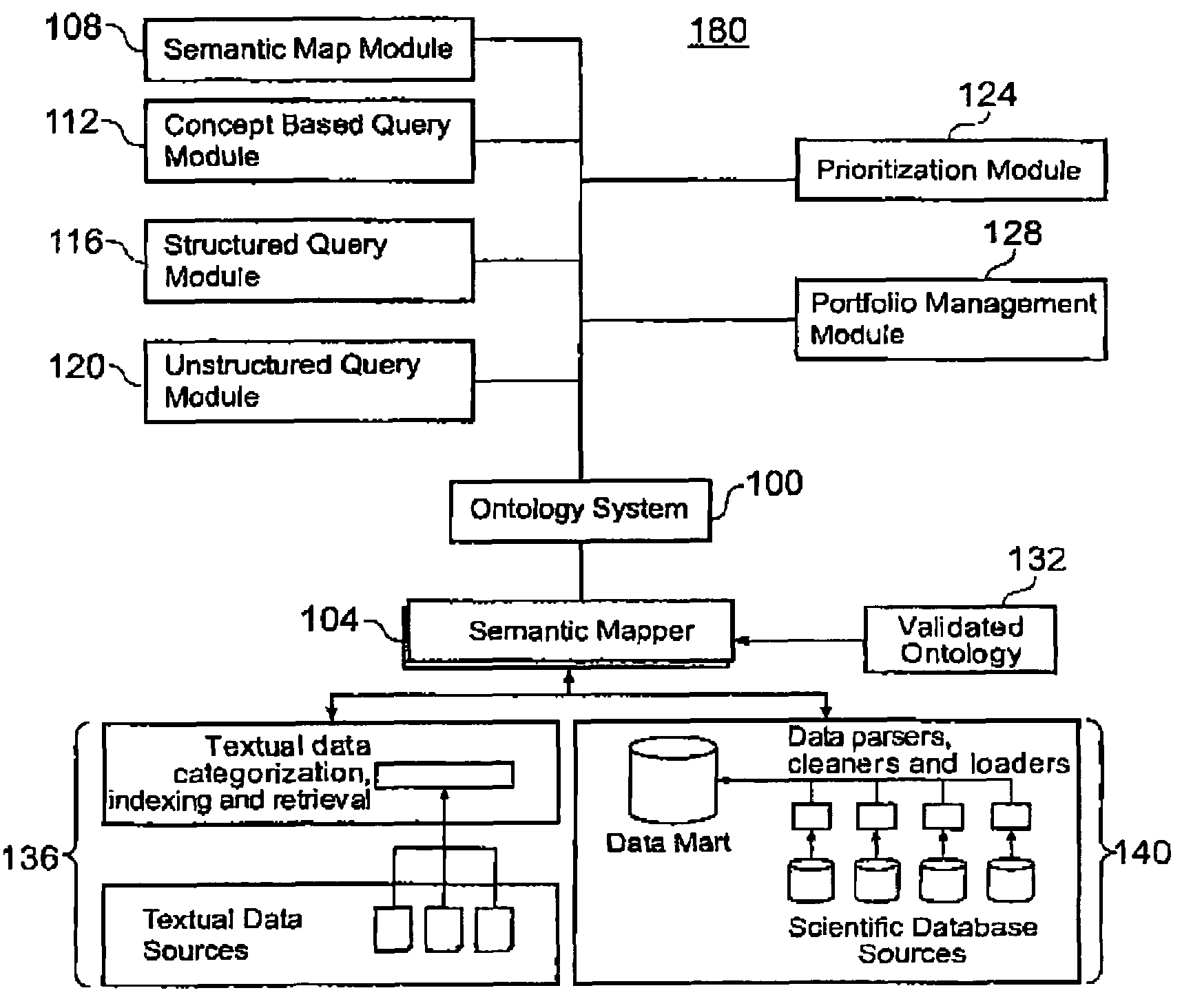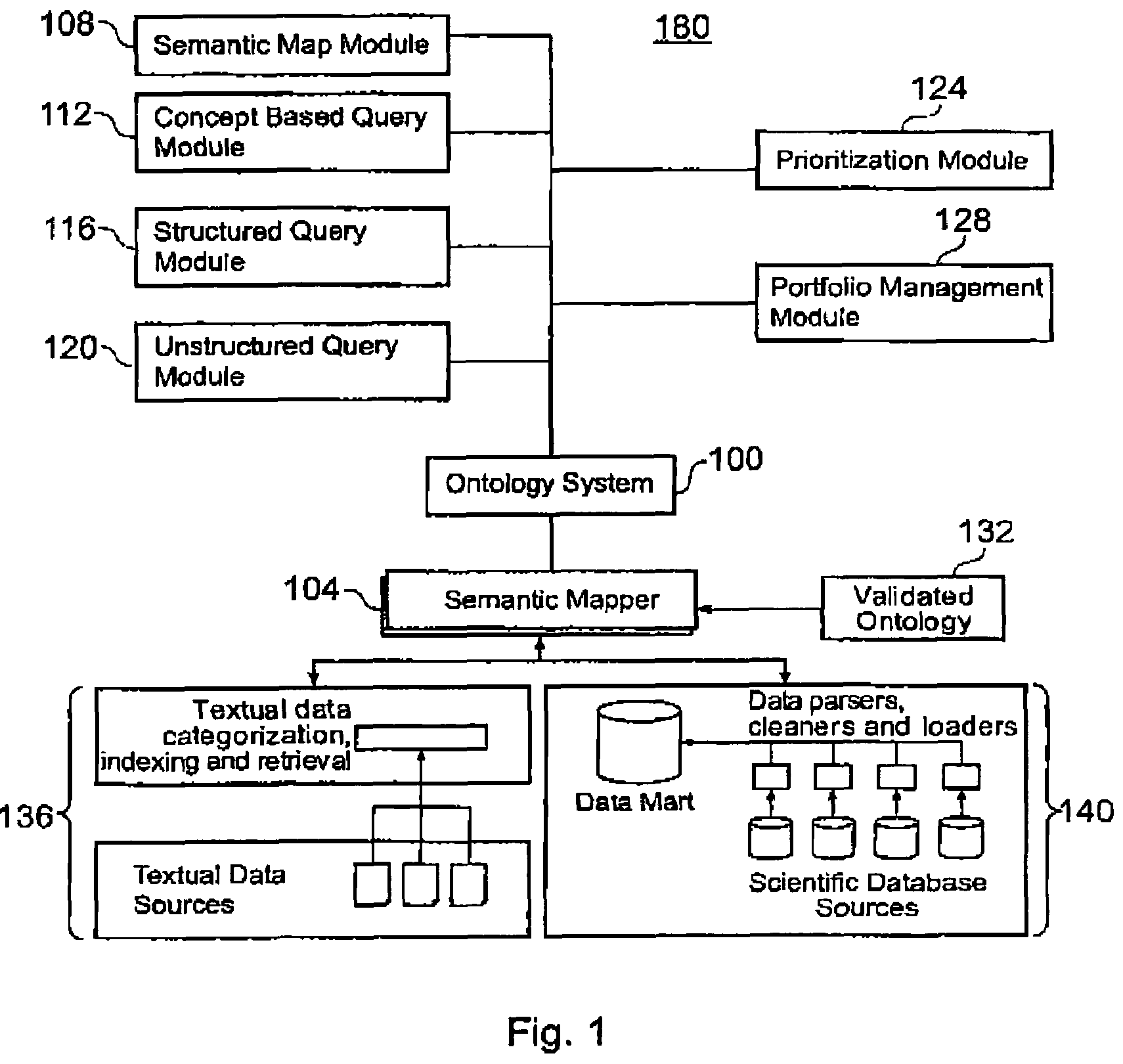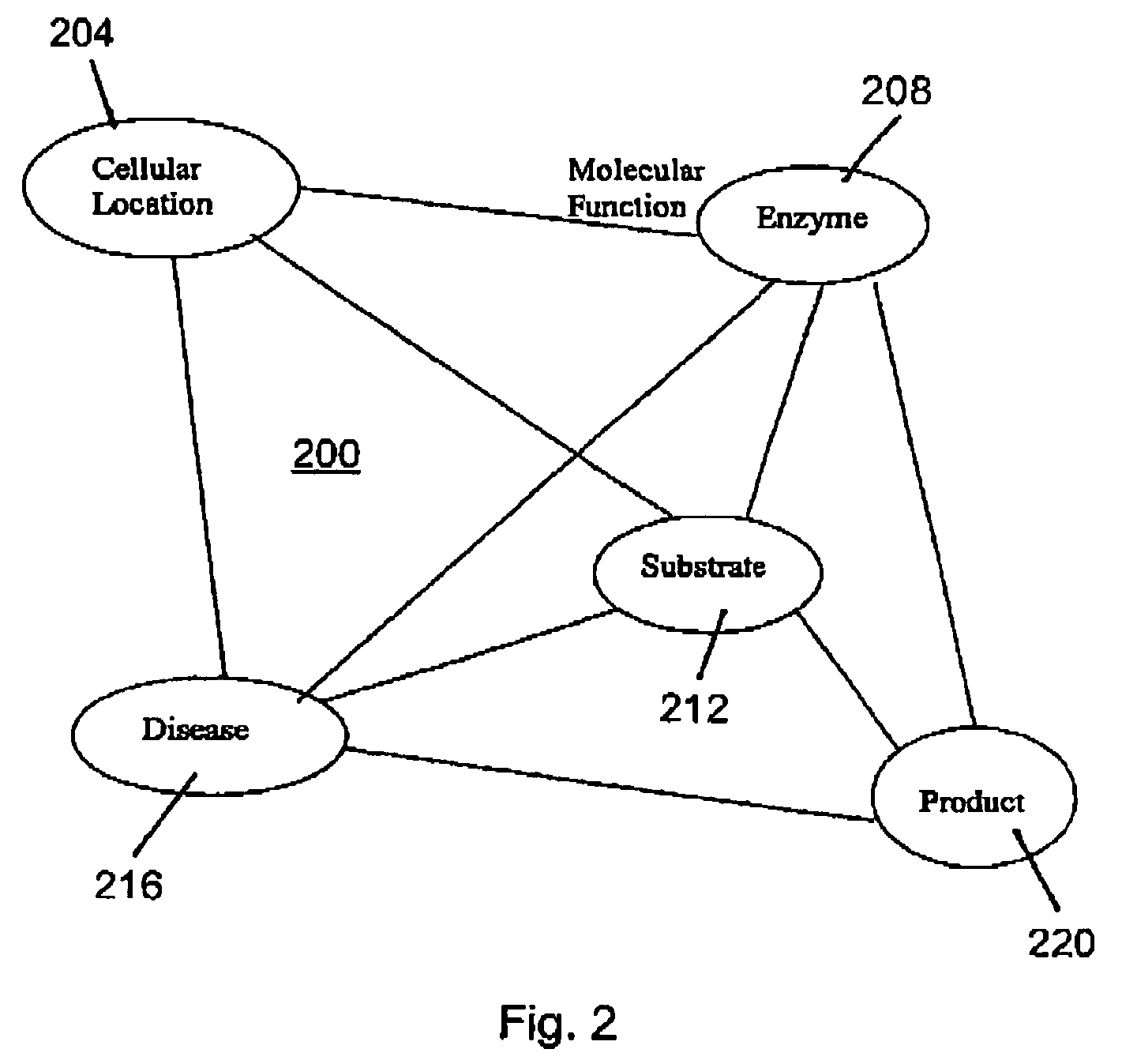Ontology-based information management system and method
an information management system and ontology technology, applied in the field of information management, can solve the problems of inability to link different areas of specialty within a discipline, inability to map ontology terms to infer linkages to related or referenced entities in wider data sources, and lack of a particularly well-developed set of semantic relationships built into the ontology. , to achieve the effect of effective syntactic and semantic mapping
- Summary
- Abstract
- Description
- Claims
- Application Information
AI Technical Summary
Benefits of technology
Problems solved by technology
Method used
Image
Examples
Embodiment Construction
[0048]An embodiment of the invention relates to an ontology-based information management system and method that integrates structured and unstructured data using an ontological approach, and further comprises processes for creating, validating, augmenting, and combining ontologies for life science informatics and other disciplines.
[0049]According to an embodiment, the invention may use an ontology (e.g., genomics) to provide semantic mapping between entries in, for example, a structured data mart and concepts in unstructured textual documents. The invention may map information from multiple sources to a common ontology, which may reduce a number of data transformation steps often required to integrate data. Mapping information to a common ontology may also enable various data or other applications to access data in a consistent way. As an illustrative example, the system of the invention may semantically map structured information from existing genomics, proteomics, screening, and c...
PUM
 Login to View More
Login to View More Abstract
Description
Claims
Application Information
 Login to View More
Login to View More - R&D
- Intellectual Property
- Life Sciences
- Materials
- Tech Scout
- Unparalleled Data Quality
- Higher Quality Content
- 60% Fewer Hallucinations
Browse by: Latest US Patents, China's latest patents, Technical Efficacy Thesaurus, Application Domain, Technology Topic, Popular Technical Reports.
© 2025 PatSnap. All rights reserved.Legal|Privacy policy|Modern Slavery Act Transparency Statement|Sitemap|About US| Contact US: help@patsnap.com



